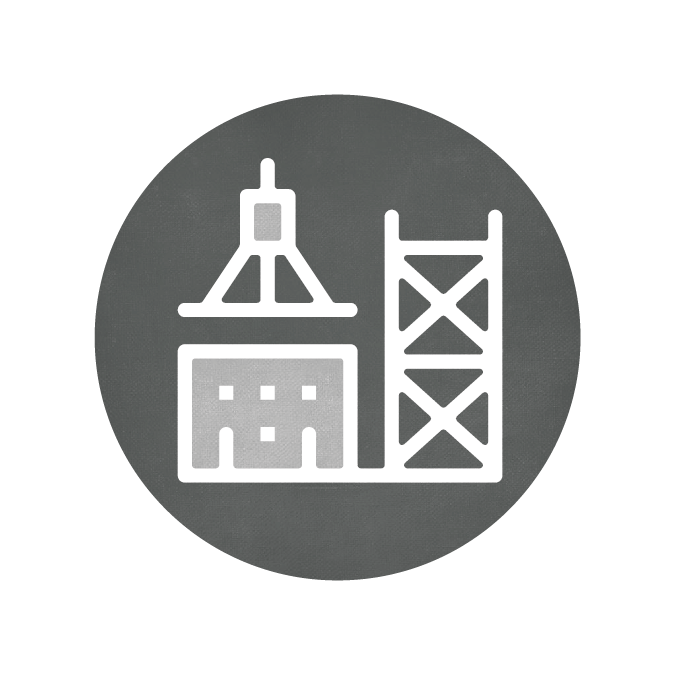How Transportation Impacts Health
Transportation infrastructure encompasses all aspects of movement within a community, including buses, trains, cars, bikes, highways, streets, and sidewalks. A well-integrated transportation system links individuals to where they reside, study, work, and recreate. Robust transportation infrastructure enables people to travel safely and easily within a community, facilitating employment, social connection, and access to necessary goods and services. Public transportation and active transportation such as biking or walking reduce reliance on cars, improving environmental quality and decreasing traffic congestion and traffic-related crashes1. Ultimately, diverse and well-designed transportation infrastructure supports disease prevention, community well-being, and a thriving, resilient community.
Alternative Transportation to Work
Why this is important: Alternative transportation refers to modes other than driving alone in a car, including carpooling, taking the bus, walking, or biking. People are more likely to commute by foot, bike, or public transit in communities with accessible and safe transportation infrastructure2. Using active or shared transportation has profound benefits for physical, mental, and environmental health. Commuting by foot or bike is a form of exercise that helps individuals maintain physical fitness and overall health and well-being. Alternative transportation reduces traffic congestion and decreases vehicle emissions, contributing to better air quality and a healthier environment.
Definition: Percent of the working population who carpools, takes public transportation, bikes or walks to work

Trend: The percent of the working population commuting by carpool, public transportation, bike or on foot has been decreasing significantly from 2014 to 2023.

Geography: The percent of the working population commuting by carpool, public transportation, bike or on foot in Whatcom County was lower than the percent in Washington state in 2023.

Disparities: None identified.
Learn more:
- Whatcom Smart Trips
- Whatcom Transportation Authority
- Active Transportation and Health, US Department of Transportation.
- Promoting Active Transportation: An Opportunity for Public Health, Safe Routes to Schools & American Public Health Association.
Motor Vehicle Collisions with Pedestrians and Bicyclists
Why this is important: Ensuring the safety of bicyclists and pedestrians is crucial for building strong, connected communities. Infrastructure for safe walking and biking makes it easier for people to access employment, schools, and other important services, improving their overall quality of life. Reducing motor vehicle collisions with bicyclists and pedestrians creates a safer environment that encourages walking and biking, leading to healthier, more vibrant communities.
Definition: Number of motor vehicle collisions with pedestrians and bicyclists per 100,000 people

Trend: The rate of motor vehicle collisions with pedestrian and bicyclists has been decreasing significantly in Whatcom County from 2014 to 2022.

Geography: The rate of motor vehicle collisions with pedestrians or bicyclists in Whatcom County was lower than Washington State in 2022.

Disparities: Disparities exist for motor vehicle collisions with pedestrians and bicyclists in Whatcom County among the age of the victims involved in the collision.
Learn more:
- Feet First: Promoting Walkable Communities
- Pedestrian Laws and Safety, WA State Department of Transportation.
- Active Transportation User Fatalities in Washington Dashboard, WA Traffic Safety Commission.
Households without a Vehicle
Why this is important: Reliable transportation is essential for daily life, enabling people to commute to work or school, buy groceries, and visit the doctor. Households without a personal vehicle rely on public transportation, carpooling, or alternative modes such as biking, walking, or ride services. Lack of a personal vehicle can create barriers to receiving timely health care, participating in community events, or responding to emergencies, especially in areas with limited public transportation. However, other transportation options promote sustainability and decrease vehicle emissions, contributing to better air quality and a healthier environment.
Definition: Percent of households without a vehicle

Trend: The percent of households without a vehicle in Whatcom County has not changed significantly from 2014 to 2023.

Geography: The percent of households without a vehicle in Whatcom County was lower than Washington state in 2023.

Disparities: Disparities in vehicle access in Whatcom County exist among race and sex of householders. Hover over the data to discover more.
Learn more:
- Why We Ask Questions About Vehicles Available, US Census Bureau.
Motor Vehicle Traffic Deaths
Why this is important: Car crashes are a leading cause of accidental deaths. Wearing seatbelts, not driving under the influence of alcohol or drugs, and using hands-free devices significantly enhance road safety and reduce the risk of crashes3. Promoting safe driving practices and implementing effective traffic safety measures are essential for reducing traffic-related injury, disability, and death, and creating safer communities. The Healthy People 2030 national target is 10.1 per 100,000.
Definition: Number of deaths from motor vehicle traffic accidents per 100,000 people

Trend: The motor vehicle traffic death rate in Whatcom County had been decreasing significantly from 2003 to 2012, but has not been changing from 2012 to 2022.

Geography: The motor vehicle death rate in Whatcom County was not significantly different from the rate in Washington state in 2022.

Disparities: Disparities exist for motor vehicle traffic death rate in Whatcom County between the sexes. Hover over the data to discover more.
Learn more:
- State of the State: Washington Traffic Fatalities, WA Traffic Safety Commission, 2024.
- Traffic Fatalities Dashboards, WA Traffic Safety Commission.
- The Roadway Safety Problem, US Department of Transportation.
Motor Vehicle Traffic-Related Hospitalizations
Why this is important: Tracking vehicle traffic-related injuries that result in hospitalization provides information on the severity of car crashes. This information highlights the serious injuries that require hospitalization; however, it does not capture less severe injuries that don’t lead to hospitalization. Other factors, such as the age or health status of the injured person, also influence whether they are hospitalized. Understanding these trends can inform strategies to reduce the incidence of serious traffic-related injuries.
Definition: Number of motor vehicle traffic-related injury hospitalizations per 100,000 people (age-adjusted)

Trend: The motor vehicle traffic injury hospitalization rate in Whatcom County has been decreasing significantly since 2002.

Geography: The motor vehicle injury hospitalization rate in Whatcom County was significantly lower than the rate in Washington state in 2021.

Disparities: Disparities exist among those hospitalized between the sexes and among different age groups. Hover over the data to discover more.
Additional Resources
- Whatcom Mobility 2040 Transportation Plan, Whatcom Council of Governments.
- How You Can Participate in Transportation Decision Making, Whatcom Council of Governments.
- Transportation and Health, American Public Health Association.
How to cite information or data from this website: Citation Instructions



